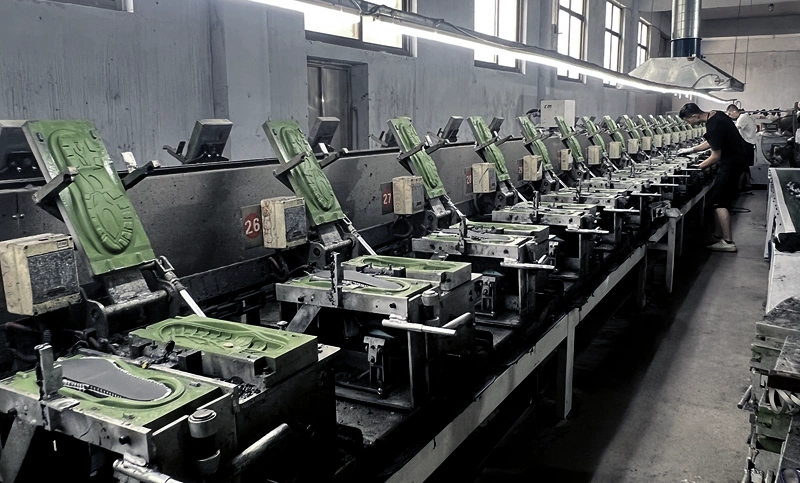
News Information
Shandong Hongjie Safety Protection Products Co., Ltd. and Qingdao Anmaotong Safety Protection Products Co., Ltd.'s safety shoes, with their superior safety performance and reliable quality, have been widely used in numerous industries such as petroleum, chemical, metallurgy, power, automobile, and shipbuilding, serving many large and small enterprises and winning widespread recognition and high praise from customers.
We are committed to providing professional protective solutions for various industries to ensure the safety and comfort of every worker. Welcome to consult and cooperate with us to jointly safeguard your work safety!

Special performance of safety shoes
Date:
2025-07-15
Impact Resistance
Impact testing is performed using a steel impact hammer of a specified weight. When the toe cap is impacted, the gap height under the toe cap should be less than the specified value, and no penetrating cracks should appear in the toe cap in the direction of the safety shoe line on the test axis. It is worth noting that the weight, specifications, impact height, and structure of the impact hammer vary among national standards; therefore, distinctions should be made during actual testing.
Puncture Resistance
A pressure plate is mounted on the testing machine, with a test nail (a nail with its tip removed) mounted on the pressure plate. The hardness of the nail head should be greater than 60HRC. Place the outsole sample on the base plate of the testing machine so that the test nail can puncture the outsole. Puncture the outsole with the test nail at a speed of 10 mm/min ± 3 mm/min until penetration, recording the maximum force required. Select 4 points on each outsole for testing (at least one point on the heel), with each point at least 30 mm apart and more than 10 mm from the inner sole edge. For outsoles with anti-slip blocks, puncture between the blocks. Two of the four points should be tested within 10-15 mm of the edge of the outsole. If humidity affects the results, soak the outsole in deionized water at 20℃±2℃ for 16±1h before testing.
Heel Performance
The testing instrument has a maximum compression load of 6000N and is equipped with a device for recording load/deformation characteristics. Place the shoe sample with a heel on a steel plate, and place the test plunger against the inner sole in the center of the heel. Apply the load at a speed of 10 mm/min ± 3 mm/min. Draw a load/compression curve and calculate the absorbed energy E in joules.
Anti-static
After conditioning the shoe sample in dry and humid atmospheres, fill the shoe with clean steel balls and place it on a metal probe device. Use a specified resistance tester to measure the resistance between the first two probes and the third probe. Generally, conductive shoes should have a resistance of no more than 100K ohms; anti-static shoes should have a resistance between 100K ohms and 100M ohms.
Previous Page:
Next Page:
Related Articles
Safety shoes protect the toes in work shoes
2025-07-15
2025-07-15
Future prospects of safety shoes
2025-07-15
